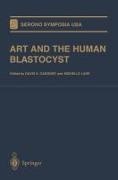Ulteriori informazioni
The field of human artificial reproductive technology (ART) is continually advancing and has witnessed significant changes since the inception of Louise Brown in 1978. Though Louise Brown herself was conceived after the trans fer of a blastocyst, there remain significant confusion and debate regarding the stage at which the human embryo conceived in the laboratory should be replaced in the mother. Developments in culture media formulations, leading to the introduction of sequential media, have brought the role of the blasto cyst in human ART back into the spotlight. It was due to this resurgence of interest in the niche of extended culture in human infertility treatment that the symposium on "ART and the Human Blastocyst" was held. of this meeting within this volume bring to the forefront The proceedings the main issues raised with the transfer of embryos at the blastocyst stage. It is evident from the chapters that follow that ART needs to be perceived as a continuum of procedures, each one dependent on the preceding one, and all equally as important as each other. That is to say, the development of a com petent embryo is ultimately dependent on the quality of the gametes from which it was derived. With regard to the oocyte, this then places the emphasis on the physician to use a stimulation protocol that both produces quality oocytes and does not impair endometrial function. Maintenance of gamete and embryo quality is the laboratory's role.
Sommario
I. Gamete Quality and Pregnancy Outcome.- 1. The Impact of High-Order Multiple Pregnancies.- 2. Patient Stimulation and Effect on Outcomes.- 3. New Developments in Imaging and Hormonal Stimulation of the Ovaries.- 4. Paternal Effects on Fertilization, Embryo Development, and Pregnancy Outcome.- II. Physiology of the Embryo.- 5. The Cell Biology of Preimplantation Development.- 6. Metabolism of the Early Embryo: Energy Production and Utilization.- 7. Blastomere Homeostasis.- 8. Cell Junctions and Cell Interactions in Animal and Human Blastocyst Development.- III. Blastocyst Development in Culture.- 9. Blastocyst Development in Culture: The Role of Macromolecules.- 10. Culture Systems and Blastocyst Development.- 11. Apoptosis in the Human Blastocyst: Role of Survival Factors.- 12. Predictors of Viability of the Human Blastocyst.- IV. Blastocyst Transfer and Fate.- 13. Which Patients Should Have Blastocyst Transfer?.- 14. Embryo Transfer and Luteal Phase Support.- 15. Cryopreservation of Blastocysts.- V. Implantation.- 16. Embryo-Maternal Dialogue in the Apposition and Adhesion Phases of Human Implantation.- 17. Biomarkers and the Assessment of Uterine Receptivity.- 18. Endometrial Pinopodes: Relevance for Human Blastocyst Implantation.- 19. The Future: Toward Single Embryo Transfer.- 20. The Niche of the Blastocyst in Human ART.- Author Index.

